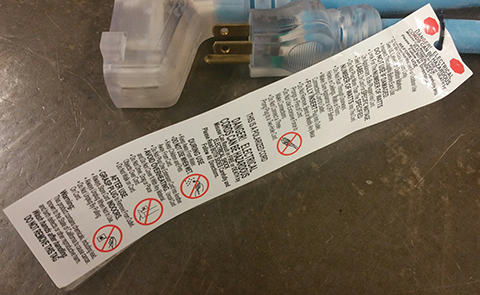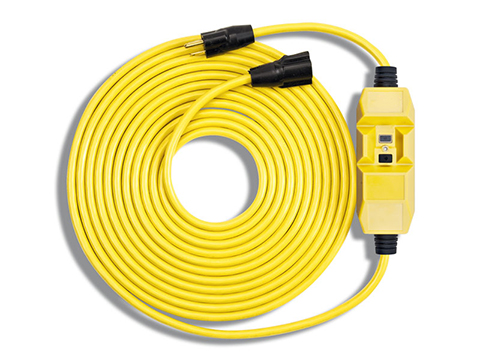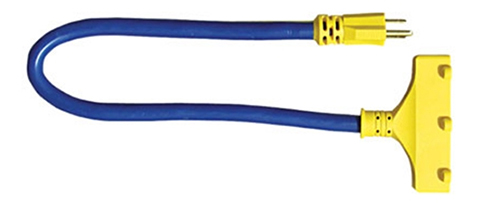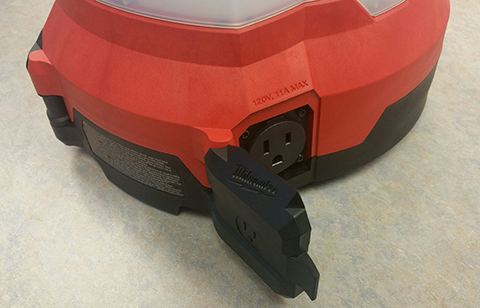We have heard many different questions about extension cords and GFCIs usage so when we had Travis from Safex in to talk about jobsite safety this was one of the first things on our list. We have also spoken with people who have had problems with OSHA because of cord usage so we wanted to see if we could provide some helpful guidance to help others avoid future troubles. We firmly believe everyone’s number one priority here is to keep people safe on the job! Turns out there is not much mystery, all the rules are right on the warning tag attached to every extension cord and GFCI. The other big part of the equation here is identifying damage and service issues which we will follow up shortly in our next video with Travis from Safex.
Warning Labels: Often the first thing some people do is rip that warning tag off, it’s like the tag on your mattress, don’t do it. On that tag it covers all the proper usage: don’t used if damaged, don’t use when wet, do not use more than specified number of watts, do not plug one extension cord into another, just to name a few. On the GFCIs there is a similar warning label for properly using the GFCI, read it. The OSHA fines are issued for not following these manufacturers’ safety requirements so it’s serious business.
GFCI Always Goes First: This is a big issues and a super easy thing to fix! Never plug a GFCI into your extension cord, always plug the GFCI in first directly to power outlet, then you can plug the extension cord into the GFCI (or multiple extension cords into it only if the GFCI has multiple receptors).
What is the Most Cord Length You Can Use: So without plugging 2 extension cords into one another (which hopefully nobody will do again) what is the maximum distance you can work away from the power outlet? With GFCIs most commonly we see 2’ or 3’ length options however there make many lengths including 50’ & 100’ GFCIs which are designed specifically to allow extension cords to be used with them. In keeping with 1 GFCI and 1 cord you can work up 200’ away from the outlet within the guidelines of the cord manufacturer Southwire. Of course you will have significant amperage lose out that far, by 50% or more which could make this an unsafe practice for other reasons. If you are not sure check with a safety professional.
Don’t Be Tempted: Do you own one of these pig tails? Fair warning this is an extension cord and must play by the same rules as any other extension cord, you cannot run a 100’ cord then plug this into the end, that’s a big no no! They can plug into a GFCI and comply but they can lead to many more problems if not used properly. Get them off the jobsite to avoid the temptation and start looking for safer options, perhaps GFCIs and/or extension cords with multiple receptors.
Can You Go Longer with Lighting: One of the benefits of new lighting products like the Milwaukee M18 Radius Light 2145-20 ($299), 2146-20 ($349, One-Key) or similar products from Dewalt and others is that they can connect together with an AC outlet. These are designed to mimic the function of traditional light strings however these are fully functional UL rated receptacles which you can plug AC into (120V, 11A MAX) to power a light, radio or jigsaw or whatever. We were curious what the limits might be, so we asked Jason Isaacs, Milwaukee Product Manager, if you plugged the Radius into a 100’ extension cord and then a 100’ extension cord into the AC out would it power a tool 200’ away?
“When stringing 200’ of extension cords, the major concern to a user is voltage drop. To circumvent this issue, a larger gauge extension cord needs to be used to keep voltage high enough to operate a 120v tool at a distance. Below is a chart that lists the suggested current draw when using 200’ of extension cords. The farther the distance from a power source, the required gauge grows at an increasing rate. When operating an M18 RADIUS™ Compact Site light, which operates at around 1 amp, you will need to factor in that current draw as well. Therefore, at the distance of 200’ while using an M18 Radius Site Light with a 12 gauge cord, users will have the ability to operate a tool that is less than 4 amps. If using a 10 gauge cord they can operate a tool up to 6 amps. All in all, this is possible while using a M18 RADIUS Site Light, but a user will be very limited in which tools they can operate at that distance. This all being said, very few situations still require corded power tools so this is a particular situation we don’t believe our users would run into. We have been delivering corded power in cordless tools since the launch of FUEL in 2012, and the gap is narrowing on the final remaining situations where a cord is truly needed.”
Current Draw Min Size
0.1-2.0A 16 gauge
2.1-3.4A 14 gauge
3.5-5.0A 12 gauge
5.1-7.0A 10 gauge.
7.1-12.0A 8 gauge
12.1-16.0A 6 gauge
Are You Using GFCIs & Extension Cords Correctly? Hopefully none of this is news to you and your crew is already working safely under the guidelines of these various manufacturers! We really want to thank Travis and Safex for helping to continue to address some of our jobsite questions, if you’ve got more in-depth safety questions give them a call or email. Again we are already working on the next video about identifying cord damage and related safety concerns.
If you need professional jobsite lighting, GFCIs & Extension Cords or anything else for the job give the pros at Ohio Power Tool a call 800-242-4424 and they will be happy to help.







